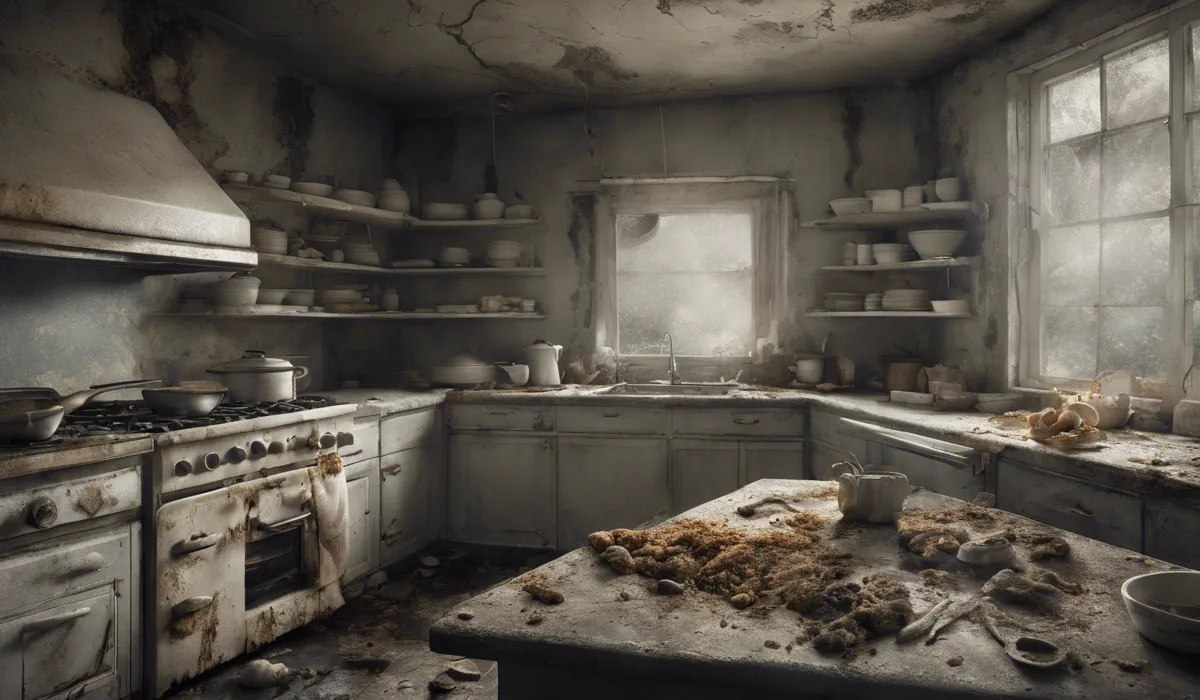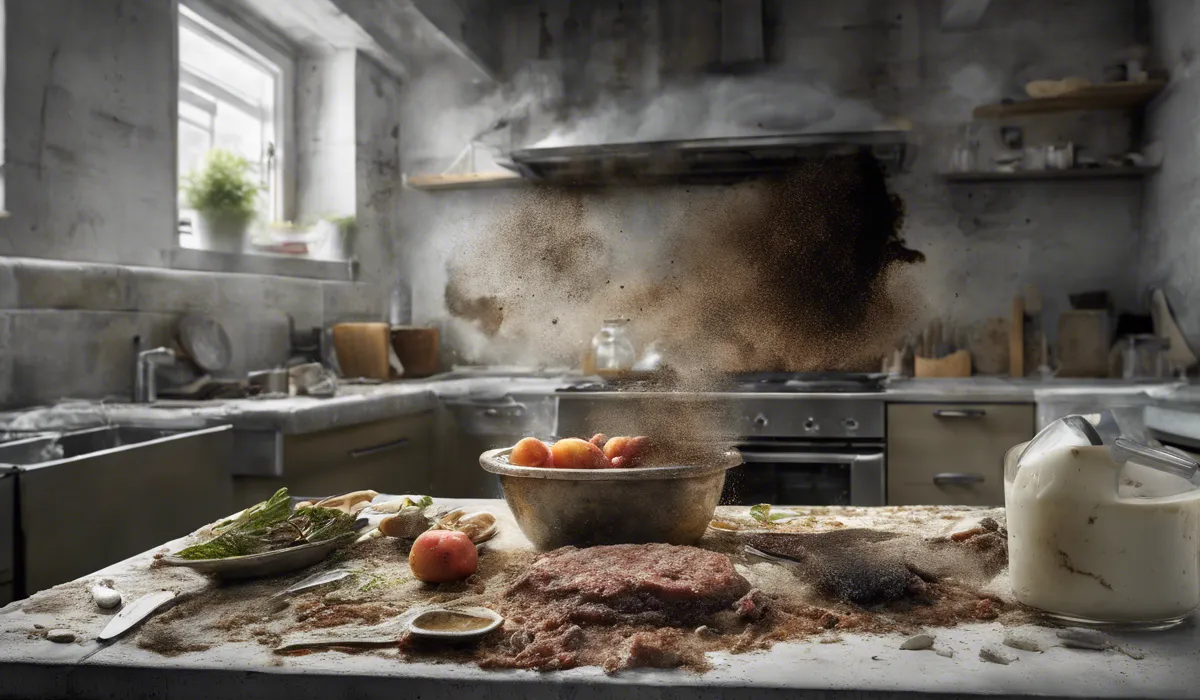Yes, cooking can kill mold; high temperatures destroy mold spores and its toxins. However, cooked moldy food may still be unsafe due to residual toxins and spoilage. It’s best to discard mold-infected food to avoid health risks.
Understanding Mold and Its Resilience

What Is Mold?
Mold is a type of fungus that grows in multicellular structures called hyphae. It can be found almost everywhere and is essential for breaking down dead organic matter. Yet, when it grows on food, it can be a cause for concern.
Mold comes in various colors and shapes, making some foods inedible and potentially harmful.
Common Food Molds
There are several types of mold that often grow on food, like Penicillium, Aspergillus, and Cladosporium.
These molds can appear as fuzzy green spots on bread or white dust on cheese. Knowing which molds are harmful is important for food safety.
Mold’s Ideal Conditions
Mold loves warmth, moisture, and darkness. Kitchens and pantries can provide the perfect environment for mold to thrive, especially if food is stored improperly or left out for too long.
It’s essential to control these conditions to prevent mold growth.
Structure and Composition
Mold has a complex structure that allows it to anchor to surfaces and absorb nutrients. Its cells are connected in long chains, making it robust and sometimes difficult to remove.
This structure also enables mold to grow rapidly under the right conditions.
The Role of Mold Spores
Mold reproduces through tiny particles called spores. These spores are tough and can survive in harsh conditions, waiting for the right environment to start growing again.
They are a key reason why mold is so resilient and why it can seem to appear out of nowhere.
The Effects of Heat on Mold

Killing Mold with Heat
Heat can effectively kill mold. Most mold spores die off when exposed to temperatures above 140°F.
However, the exact temperature required can vary based on the type of mold and the length of exposure.
Mold Toxins and Heat
Killing mold doesn’t always neutralize its toxins, known as mycotoxins. These substances can withstand heat and may remain harmful even after the mold is dead.
It’s crucial to understand that cooking can reduce mold, but it may not eliminate all risks.
Scientific Evidence on Heat’s Impact
Studies show that heat treatment can reduce mold and its spores. However, the effectiveness varies, and some heat-resistant spores may survive.
Researchers continue to investigate the best ways to use heat to manage mold in food products.
How Cooking Methods Affect Mold
Different cooking methods like boiling, baking, and frying can all kill mold to some extent. However, the penetration of heat and the duration of cooking play significant roles in how well these methods work in killing mold and reducing potential toxins.
Heat Treatment Limitations
While heat can kill mold, it doesn’t always penetrate deep into food. Additionally, some moldy foods may have other bacteria or spoilage that makes them unsafe to eat, regardless of cooking.
Therefore, relying solely on heat treatment can be insufficient for ensuring food safety.
Safe Practices for Handling Moldy Food

When to Save vs. Discard
As a general rule, it’s best to throw away moldy food. However, some hard cheeses and firm fruits and vegetables can be saved by cutting off the moldy part, plus an extra inch around it. When in doubt, it’s safer to discard the food.
Preventing Mold in Storage
Proper food storage is key to preventing mold. Keep your food in clean, dry, and cool places.
Use airtight containers and refrigerate perishable items promptly. Regularly checking and organizing your pantry can also help reduce the chances of mold growth.
Salvaging Foods Safely
Some moldy foods can be salvaged. For example, hard salami and dry-cured country hams may develop surface mold that can be scrubbed or trimmed off.
However, always ensure that the food looks and smells normal after removing the mold.
Risks of Eating Moldy Food
Eating moldy food can lead to allergic reactions, respiratory problems, and food poisoning.
Vulnerable populations, such as children, elderly, and those with weakened immune systems, should be especially cautious to avoid any moldy food.
Protecting Vulnerable Groups
To protect those at higher risk, it’s important to maintain strict food safety practices, like keeping food at the correct temperature and handling it with clean utensils. Regularly clean fridges and cupboards to minimize the potential for mold growth.
FAQs About Does Cooking Kill Mold
Can cooking food kill mold present in it?
Yes, cooking at high temperatures can destroy mold spores and neutralize many mold toxins, effectively killing the mold.
Is food safe to eat after cooking if it was moldy?
No, even after cooking, food that was moldy may still contain residual toxins and could be spoiled, making it unsafe to eat.
Does boiling water kill mold spores?
Yes, boiling water can kill mold spores due to the high temperature.
Are all mold toxins destroyed by cooking?
While cooking can neutralize many mold toxins, it may not destroy all types of toxins, and some may remain in the food.
Should you scrape off mold and cook the food anyway?
No, it’s best to discard mold-infected food to avoid health risks, as mold can penetrate deeper into the food than can be seen, and toxins could still be present.
Final Thoughts
While cooking at high temperatures can eliminate mold spores and neutralize some toxins, it does not guarantee safety.
Moldy food often contains residual toxins and spoilage that persist despite cooking, presenting health risks. For safety, it’s advisable to discard foods contaminated with mold rather than attempting to salvage them through cooking.
